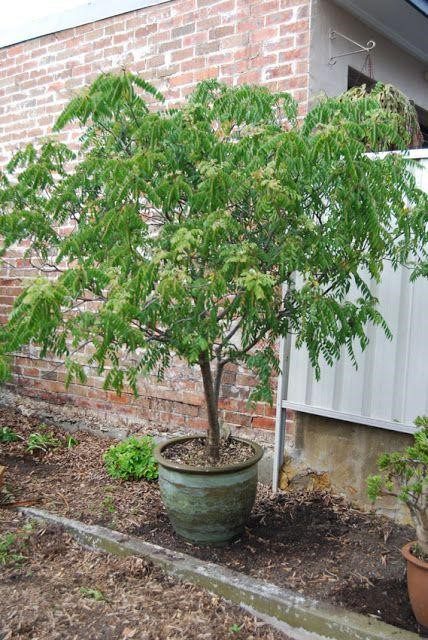Curry Leaf (Murraya koenigii)
Original price was: ₹299.00.₹249.00Current price is: ₹249.00.
OVERVIEW
Curry Leaf (Murraya koenigii)
Local Indian Name: Kadhi Patta, Meethi Neem
Scientific Name: Murraya koenigii
Family: Rutaceae
Category and Subcategory: Evergreen Shrub/Tree, Culinary and Medicinal Plant
Native Region: Indian Subcontinent
Introduction:
The Curry Leaf plant, known as Murraya koenigii, is a tropical to sub-tropical evergreen tree native to the Indian subcontinent. Renowned for its aromatic leaves, it plays a pivotal role in South Asian cuisines and traditional medicinal practices. Beyond its culinary applications, the plant is valued for its ornamental appeal and therapeutic properties.
Importance & Benefits:
-
Culinary Uses: Fresh curry leaves are integral to various dishes, imparting a distinct flavor to curries, soups, and stews.
-
Medicinal Properties: Traditionally utilized in Ayurveda for their potential anti-inflammatory, antioxidant, and digestive benefits.
-
Nutritional Value: Rich in vitamins A, B, C, and minerals like calcium and iron.
-
Ornamental Appeal: Its lush green foliage and fragrant white flowers enhance garden aesthetics.
Description and Cultivation:
The Curry Leaf plant typically grows between 6 to 20 feet tall, featuring aromatic, pinnate leaves with 11-21 leaflets. It produces small, fragrant white flowers that give way to black, berry-like fruits. Thriving in tropical and subtropical climates, the plant prefers well-draining soil and full sunlight.
Varieties and Cultivars:
-
Regular Variety: Fast-growing with standard leaf size; commonly found in markets.
-
Dwarf Variety: Shorter stature with elongated leaves; suitable for container gardening.
-
Gamthi Variety: Compact growth with thicker leaves; known for a more intense aroma.
Location and Light:
-
Sunlight: Requires full sun exposure, ideally 6-8 hours daily.
-
Placement: In colder regions, grow in containers to facilitate indoor relocation during winter months.
Soil Preparation:
-
Type: Prefers well-draining, fertile soil with a slightly acidic pH between 6.4 and 6.9.
-
Enhancements: Incorporate organic compost to boost soil fertility.
Planting:
-
Method: Propagation is commonly done through seeds or stem cuttings.
-
Timing: Best planted in spring to allow establishment before cooler temperatures.
-
Spacing: Maintain a distance of 4-5 feet between plants to ensure adequate air circulation.
Watering:
-
Frequency: Water regularly, allowing the top inch of soil to dry out between sessions.
-
Caution: Avoid overwatering to prevent root rot; ensure pots have proper drainage.
Pruning:
-
Purpose: Encourages bushier growth and prevents legginess.
-
Timing: Prune during the growing season, removing dead or weak branches and pinching off flower buds to focus energy on foliage.
Pest and Disease Management:
-
Common Pests: Aphids, scale insects, and spider mites.
-
Diseases: Fungal infections like leaf spot and powdery mildew.
-
Control Measures: Regularly inspect plants, use neem oil or insecticidal soap for pests, and ensure good air circulation to prevent fungal issues.
Environmental Conditions:
-
Temperature: Thrives between 65°F to 90°F (18°C to 32°C).
-
Humidity: Prefers moderate humidity; mist indoor plants occasionally to increase moisture.
-
Frost Sensitivity: Protect from frost; in colder climates, move potted plants indoors during winter.
Propagation:
-
Seeds: Plant fresh seeds in well-draining soil; germination may take several weeks.
-
Cuttings: Root semi-hardwood cuttings in a moist, well-draining medium under warm conditions.
Uses:
-
Culinary: Enhances flavors in various dishes; leaves can be used fresh or dried.
-
Medicinal: Employed in traditional remedies for ailments like digestive issues and inflammation.
-
Aromatic: Leaves are used in potpourri and natural air fresheners.
Monetary Benefits:
-
Market Demand: High demand in culinary markets, especially within South Asian communities.
-
Commercial Cultivation: Profitable for small-scale farmers and home gardeners due to its popularity and relatively low maintenance.
-
Value-Added Products: Potential for income through the sale of dried leaves, powders, or infused oils.
References:
RELATED PRODUCTS
REVIEWS





Reviews
There are no reviews yet.